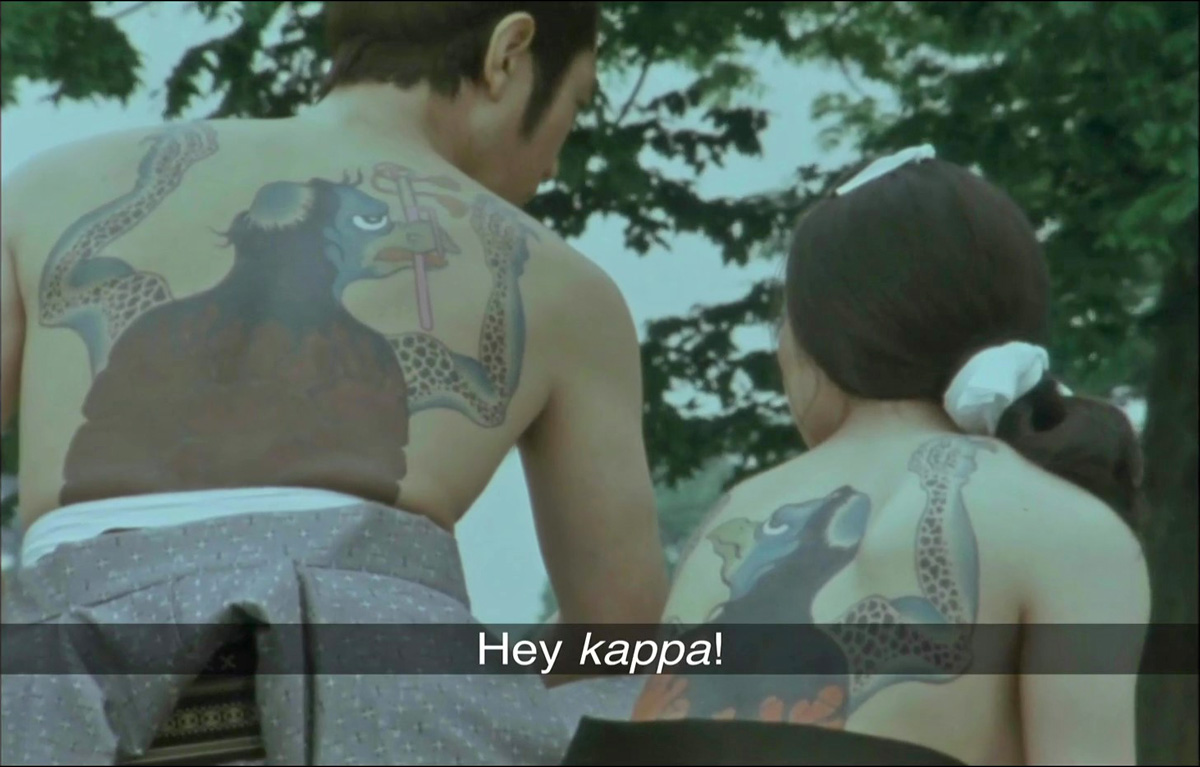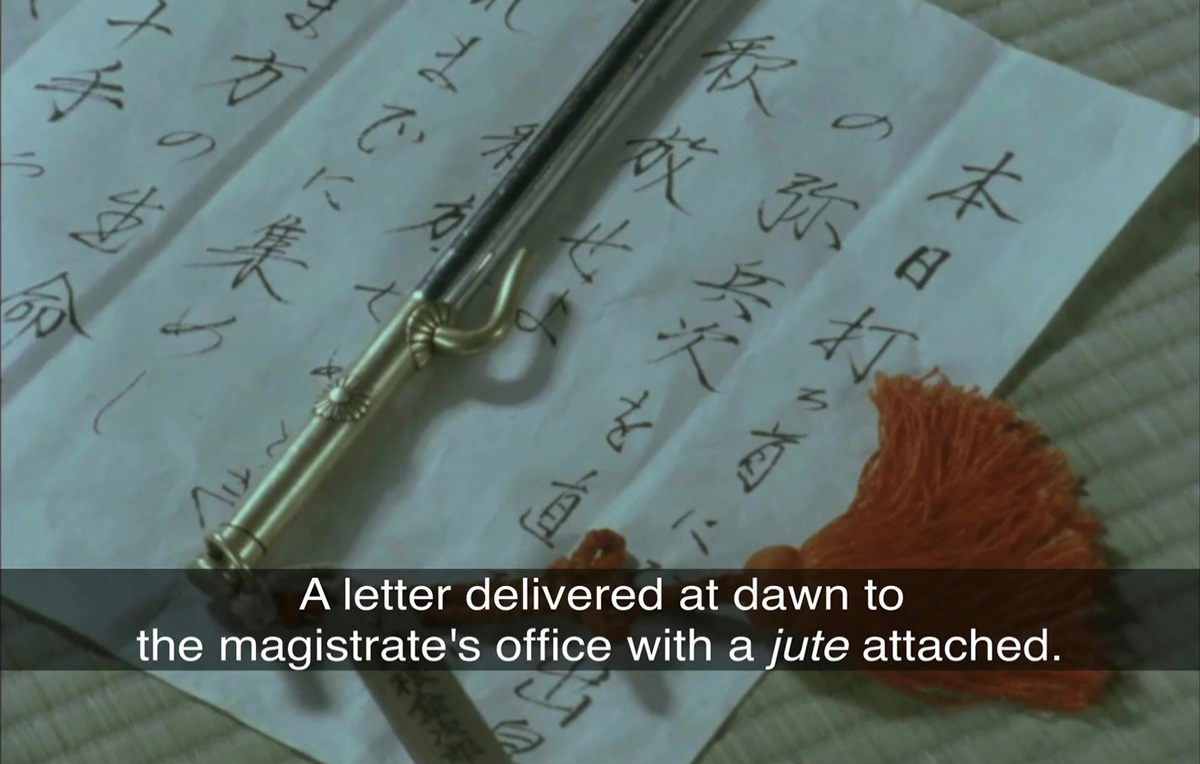Scenes
From 1972 to 1976 Kazuo Koike (1936-2018) wrote a 10-volume manga entitled "Kubikiri Asa (首斬り朝)", the "Samurai Executioner Asaemon". The police officer Sakane Kasajiro (坂根 傘次郎) and the rebellious young "Shinko the Kappa (河童の新子)" also appear there in supporting roles. The plot in the film is based on an episode of the manga. The film was first broadcast on Fuji TV in 1981 and was recently rerun on Amazon.

